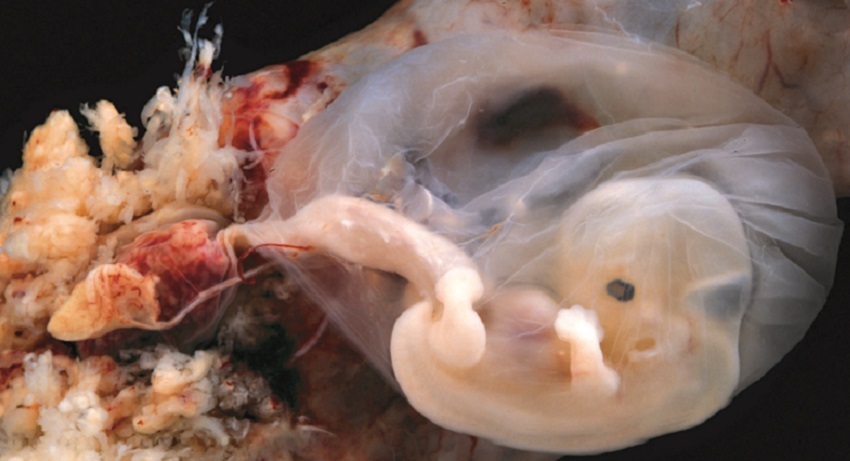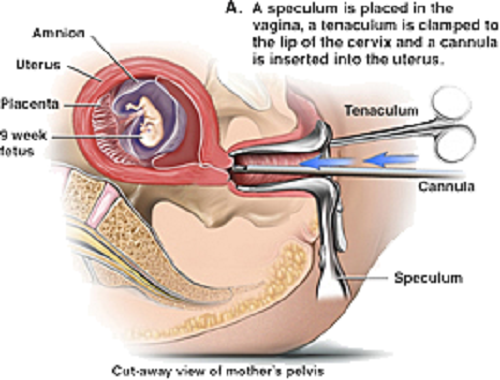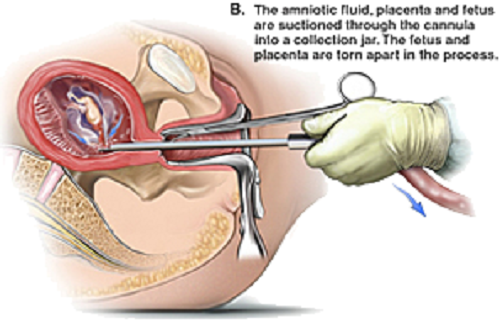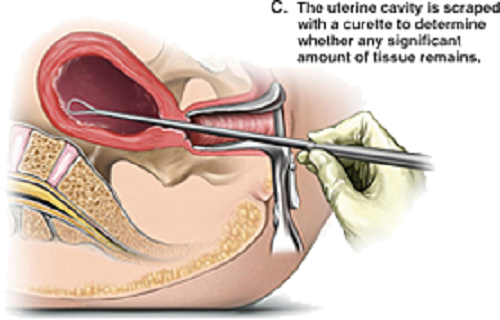1st Trimester

Abortions in the 1st trimester
Menstrual Extraction
- This is a very early suction abortion and is typically performed at about 6 weeks.
1st Trimester: Suction
Suction-aspiration: or "vacuum curettage," is the abortion technique used in most first trimester abortions.Phillip G. Stubblefield, "First and Second Trimester Abortion," in Gynecologic and Obstetric Surgery, ed. David H. Nichols (Baltimore: Mosby, 1993) p. 1016.
Also, the U.S. Centers for Disease Control (CDC), Abortion Surveillance: Preliminary Data US, 1991, Morbidity and Mortality Weekly Report, Vol. 43, No. 3, 1994, puts the percentage of suction curettage abortions relative to other techniques at 98%, though the CDC admits that their numbers include a number of D & E abortions which should be classified otherwise personal communication with Lisa Koonin, Division of Reproductive Health, CDC, 6/3/1996
In this method, the abortionist must:
First paralyze the cervical muscle ring (womb opening) and then stretch it open. This is difficult because it is hard or "green" and not ready to open.
He then inserts a hollow plastic tube, which has a knife-like edge on the tip, into the uterus.
The suction tears the baby's body into pieces. He then cuts the deeply rooted placenta from the inner wall of the uterus.
The scraps are sucked out into a bottle. The suction is 29 times more powerful than a home vacuum cleaner. Great care must be taken to prevent the uterus from being punctured during this procedure, which may cause hemorrhage and necessitate further surgery. Also, infection can easily develop if any foetal or placental tissue is left behind in the uterus. This is the most frequent post-abortion complication.



1st Trimester : D&C
Dilation & Curettage (D&C)
This is similar to the suction procedure except that the cervix is dilated or stretched to permit the insertion of a curette, a loop-shaped steel knife, up into the uterus. With this, he cuts the placenta and baby into pieces and scrapes them out into a basin. Bleeding is usually profuse.
Blood loss from D & C, or "mechanical" curettage is greater than for suction aspiration, as is the likelihood of uterine perforation and infection. This method should not be confused with routine D&C's done for reasons other than undesired pregnancy (to treat abnormal uterine bleeding, dysmenorrhea, etc.)
Testimonies of 1st Trimester Abortionists
Suction Abortionist
I can remember...the resident doctor sitting down, putting the tube in, and removing the contents. I saw the bloody material coming down the plastic tube, and it went into a big jar. My job afterwards was to go and undo the jar, and to see what was inside. I didn't have any views on abortion; I was in a training program, and this was a brand new experience.
I was going to get to see a new procedure and learn. I opened the jar and took the little piece of stockingnette stocking and opened the little bag. The resident doctor said "Now put it on the blue towel and check it out. We want to see if we got it all.' I thought, "that'll be exciting-hands on experience looking at tissue.' I opened the sock up and put it on the towel, and there were parts of a person in there.
I had taken anatomy, I was a medical student. I knew what I was looking at. There was a little scapula and an arm, I saw some ribs and a chest, and a little tiny head. I saw a piece of a leg, and a tiny hand and an arm, and you know, it was like somebody put a hot poker into me. I had a conscience, and it hurt.
Well, I checked it out and there were two arms and two legs and one head and so forth, and I turned and said 'I guess you got it all.' That was a very hard experience to go through emotionally.
- Confession of a Former abortionist
D&C Abortionist
"Arms, legs, and chests come out of the forceps. It's not a sight for everybody". William Benbow Thompson at the University of California at Irvine
"There was not one [doctor] who at some point in the questioning did not say "This is murder." Magda Denes on her two years of research done for her book In Necessity and Sorrow; Life and Death Inside an Abortion Clinic
There is no difference between a first trimester, a second trimester, a third trimester abortion or infanticide. It's all the same human being in different stages of development. I finally got to the point I couldn't look at those little bodies anymore.
said Dr. Arnold Halpern, former director of a Planned Parenthood abortion clinic.